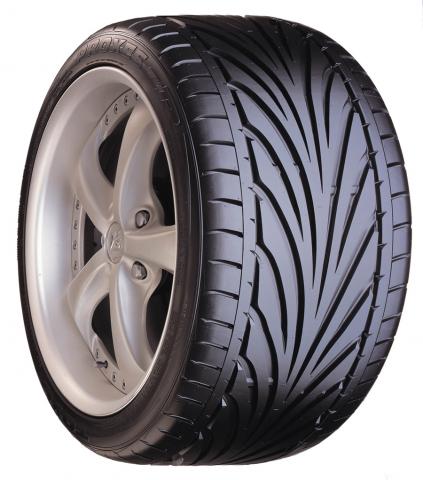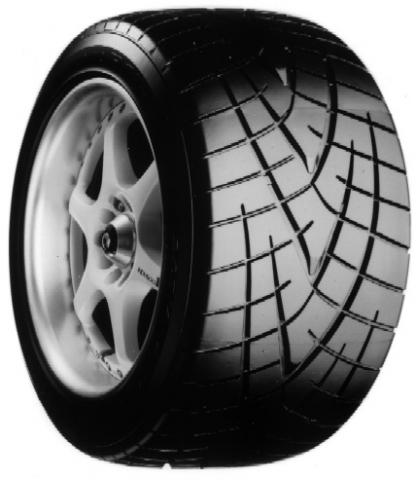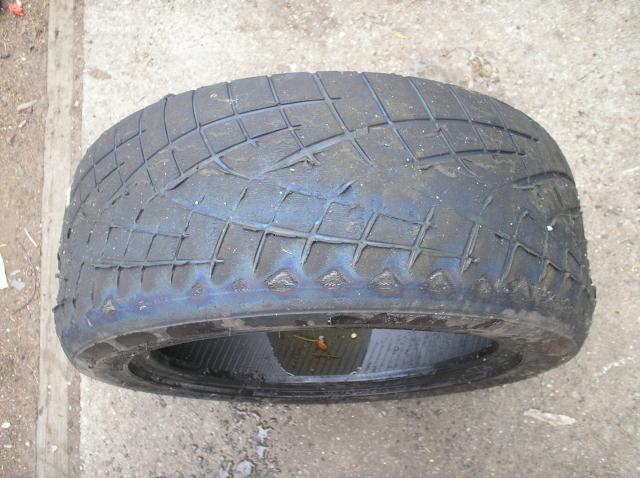
Toyo Proxes R1R
Toyo's official line on the R1R:
Toyo Tires launch the new ultra high performance tyre - The Proxes R1R.
The Proxes R1R is the perfect tyre for the occasional motorsport competitor who requires a less aggressive tyre than the Proxes R888. This exceptional tyre is ideal for Track days combining a special high-grip rubber compound with a race-inspired construction!
Toyo’s on-track experience and extensive technical knowledge helped develop a new compound mix of highly reinforced carbon black, silica and polymers for the R1R which gives superior handling, high-speed stability and outstanding grip, even in the wet.
In terms of performance, the Proxes R1R is the intermediate between the vastly popular Proxes T1R and Proxes R888. It has an advanced racing casing design and increased contact patch area which provides excellent handling performance and traction on both the street and track, and means it’s truly at home when being pushed to its limits.
Its stunning directional tread pattern possesses arrow head grooves for excellent water drainage from the wider section of the groove which enhances its wet performance, whilst the narrower sections give superb dry performance.
Mitsubishi, the Japanese car giant known for producing high performance cars chose the Toyo Proxes R1R as original equipment for their latest Evo, the incredibly powerful Evo 10 FQ-400 which has over 400bhp!
The Proxes R1R is the ultimate tyre for driver enthusiasts and is available in sizes from 15” to 18” and in profiles from 55 series to 35 series.
For a full range of sizes, go to the Toyo site here: www.toyo.co.uk
We're currently using the R1R in the JEC Toyo Tires Jaguar XJS Championship, having graduated from the T1R.
Let us be quite clear, this is a very different tyre to the T1R. Much softer, stickier, and the tread pattern is completely different. One French supplier claims that the rubber compound is identical to the 888, and that only the tread pattern and amount differs. Well, we don't know, Toyo aren't shouting about that if so, and we don't really mind all that much, we just want to know how to use them, and this does differ from the T1R.
Note the above two tyres. That's £250 worth of rubber, and it lasted less than 1/3 of what we'd expect to achieve. Fortunately for you, we did some testing to find out why. More on that at the end.
Directionality
First of all, a little more background on the tyre. Directional, as the T1R, but there is no real problem to getting that direction wrong in the dry. It matters a lot in the wet, and there is some suspicion that at low-tread levels, as above, running them backwards may be inviting serious trouble in any conditions.
Wet weather
Wet weather performance is superb. The interaction between compound and tarmac is noticably superior to the T1R in all but full rain standing-water conditions, at which point the water clearance pattern appears to be inferior.
Grip and handling
Handling-wise they are predictable and controllable on the limit, no nasty snap breakaway surprises. They are every bit as slide-able as a T1R, save that unlike that T1R you will lose proportionately more speed doing so, such is the traction level that the velocity-scrubbing effect of your lairy sideways moment is tangible.
In the dry they have clearly superior grip to the T1R. The XJS series notes, in the case of the front runners, an improvement of approximately 2 seconds per lap anywhere that has a corner in it. Braking distances are significantly affected, and startline grip evidently better. The difference is that of a road v a race tyre, there is no question about the additional grip available.
That said, some pilots in the lower Jag classes, notably the heavier class D XJS, find proportionately less improvement, a result of lesser power and braking capability, and in some cases no change in laptime whatsoever. Please note, however, that opinion in that class is divided on the subject. We at Kutuka have found that additional pace, therefore it is there!
Modified class, lighter cars are in almost-unanimous agreement about the extra grip.
Over a race distance we consider this tyre to be less stable than a T1R. It is more likely to go "off" due to overheating the tread and losing grip. Fortunately it is a progressive process, but those who abuse their drive axle may find a late-race disadvantage.
Pressures and setup
Car setup is more important on this rubber. We have carried out extensive temperature and pressure testing, and conclude that more cautious and accurate setup does reap benefits.
It is, of course, a matter of personal taste and approach, but for our super-heavy machines a lower pressure than for T1Rs appears to be favoured.
Toyo guidance for "very heavy 1400kg+ cars suggests 37-40psi hot pressure, and a temp range for the tread of 71-105 degrees Celsius.
Wear rate
The wear rating is half that of the T1R. Even if not torn to shreds, they appear to last less than half the life of a T1R under the same conditions.
The R1R does not, allegedly, need scrubbing. What it does need is a heat cycle or 2. Standard practice is now for 4 hot laps - assuming a pathetic track like Mallory, less if somewhere proper like Oulton - and let the tyres cool right down. Repeat. Now they're ready. And yes, it does make a difference.
How much?
Which brings us to the price. They are about 50% more again than the equivalent T1R does, even after scrubbing costs are considered. Ouch. In addition, the availability of sizes is worse than for the T1R.
Problems?
Other than the cost, it's all about getting your wear out of them. Even when being shredded they do still grip, but at what cost?
The above two tyres came off a class D XJS. The car was setup at a 2009 weight limit of 1510kg for T1R tyres. There was nothing wrong with the car's setup, it was unquestionably competitive. On the T1R it favoured a 50 profile tyre.
With a weight change to 1580kg the car on R1Rs was still over a second faster than T1R pace, but running that same profile R1R destroyed it very quickly. As is well apparent the other edge has been torn off very quickly, and deformation has balded the centre as if over-pressured. Temperature and pressure reading confirmed no issue with the setup of the car.
Changing that car to 45 profile tyres, and we would note this was an expensive discovery, has corrected this problem. Bear in mind, however, that the load rating on the tyre required by the regulations was inadequate for the car's weight, such that deformation was occurring even at the top end of the 40psi window. If you are suffering excessive wear to the outer edge and pressure adjustments do not assist you, consider dropping a profile.
In conclusion?
Great tyre, but costly, wears like fury, and requires more attention to setup. I wouldn't put it on a road car unless I were insanely rich.
225/50/16 after three races and very few test miles on a 1580kg class D XJS. Front nearside tyre. This wear pattern suggests that the car wants more camber, but in fact the car was spot on, this tyre has been destroyed, we believe, by the deformation of the carcass.




225/50/16 again, rear tyre, same car, same side. It lived for one additional race to the front tyre by running it in reverse on the wrong side of the car. Again, it is the carcass deforming that tears off the outer edge and gives the bald centre.
The pair off the offside merely turned themselves bald, but in reverse, inner edge first. And they lasted an extra weekend...